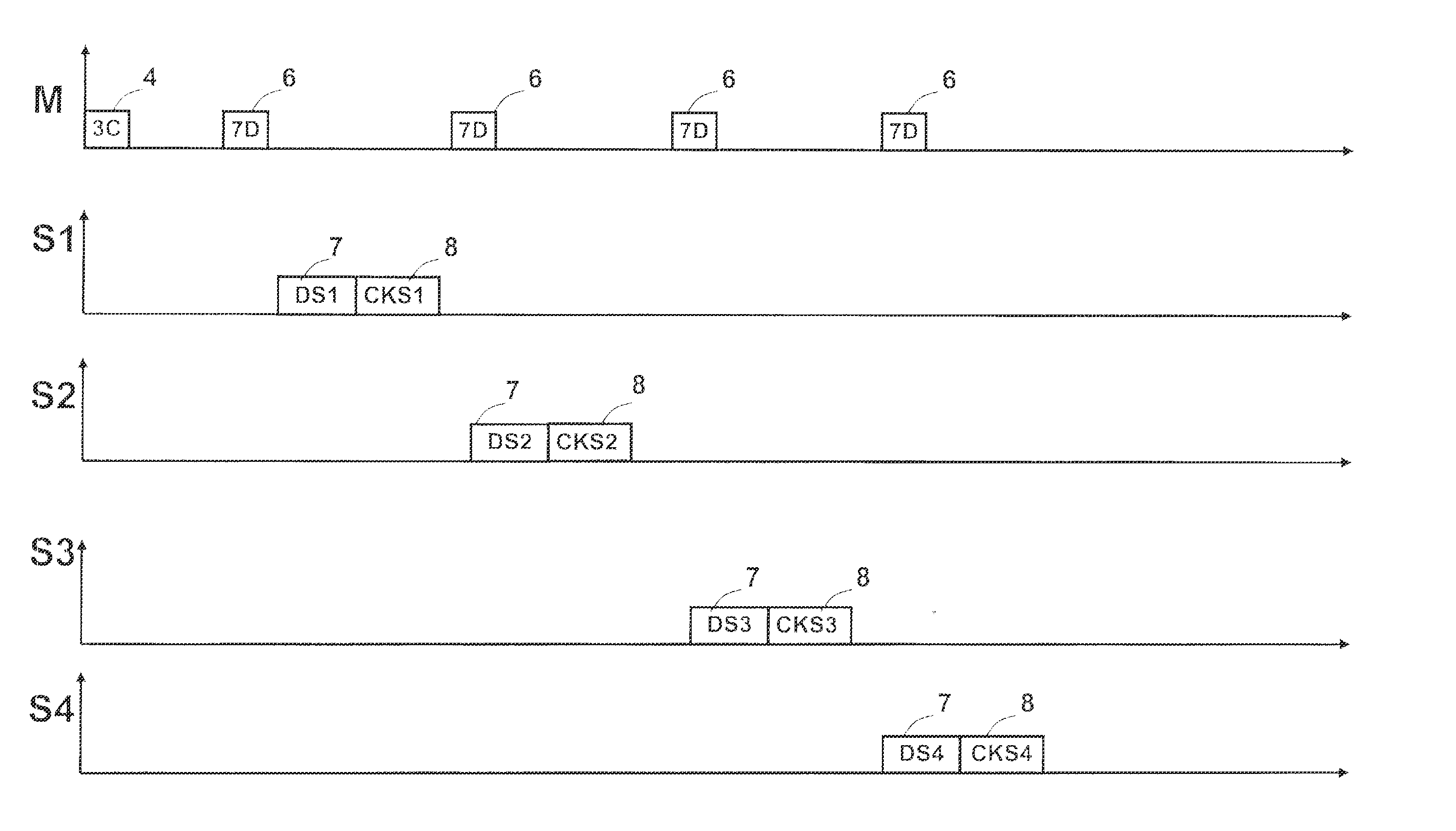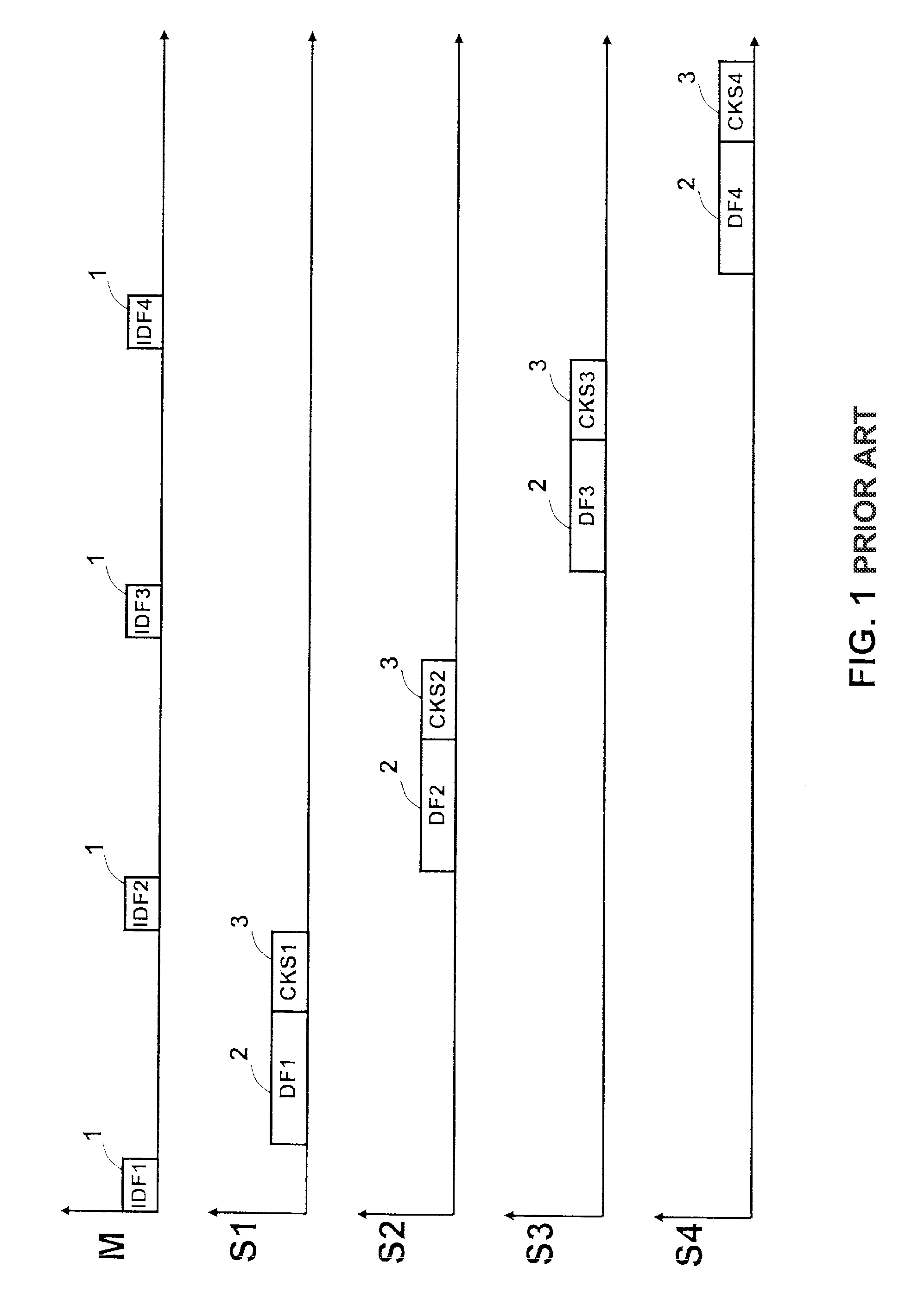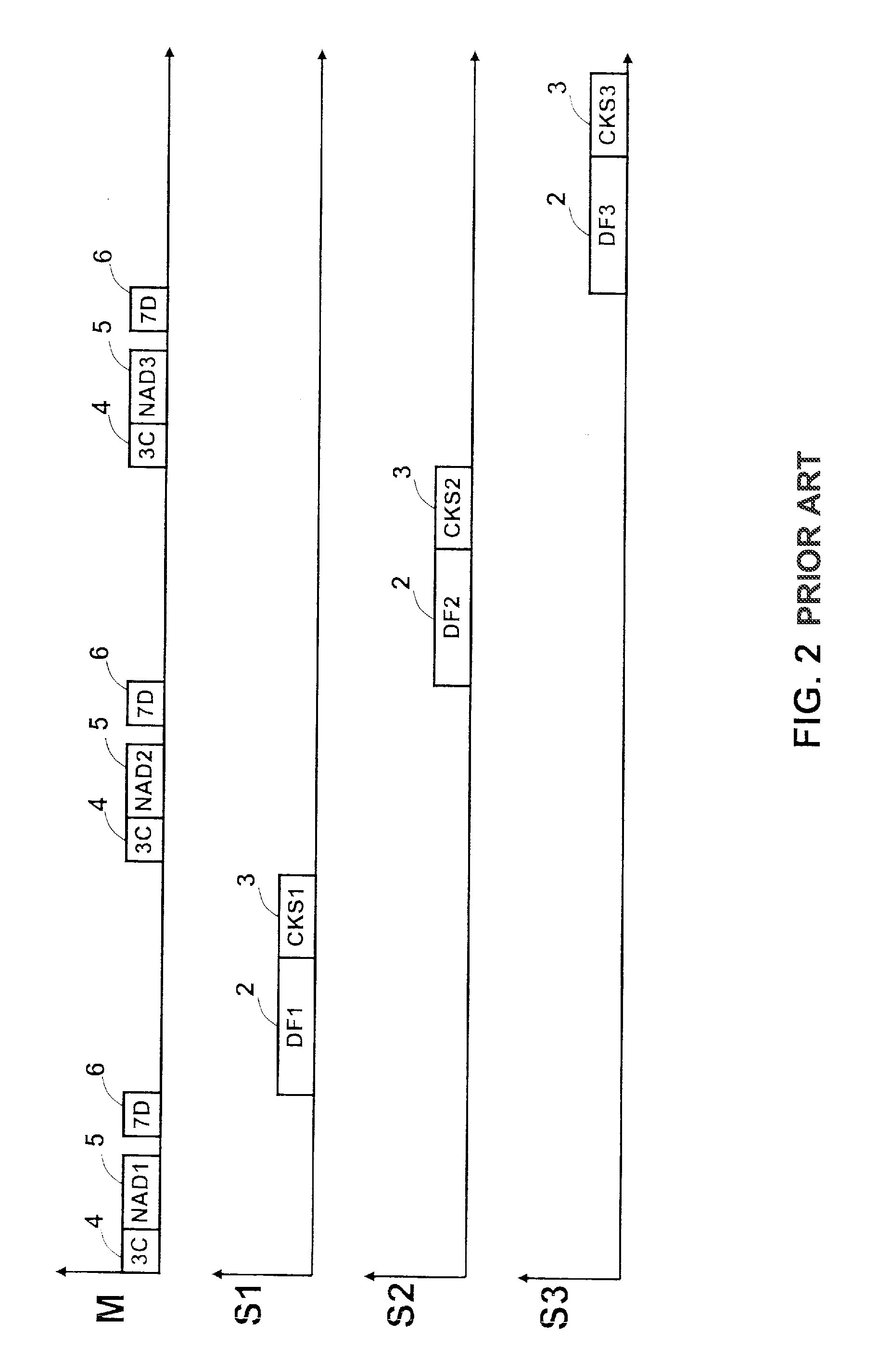Communication method and device for a motor vehicle
a communication method and motor vehicle technology, applied in data switching networks, instruments, process and machine control, etc., can solve the problems of increasing greed in passband for “passenger compartment functions” and losing the initial advantages (low cost, low interference) of the lin network
- Summary
- Abstract
- Description
- Claims
- Application Information
AI Technical Summary
Problems solved by technology
Method used
Image
Examples
first embodiment
[0053] According to the invention, corresponding to FIG. 3, the master station M sends an identifier 4 with the value 3C, that is to say a master request, to all the slave stations S1, S2, S3, S4.
[0054] These each respond in their turn in the frame initiated by the identifier 4 with the code 3C to the reception of a succession of activation identifiers 6 with the code 7D by placing in series on the bus their specific data frames 7 with the values DS1, DS2, DS3 and DS4 followed by end-of-frame blocks 8 consisting of respective checksums CKS1, CKS2, CKS3 and CKS4.
[0055] A comparison of the timing diagrams of FIGS. 1 and 3 makes the reduction in load on the bus provided by the method according to the invention obvious. This is because the status words 7 of the slave stations S1, S2, S3, and S4 sent in a command frame are advantageously shorter than the minimum of two bytes of a message frame.
[0056] The same observation can be made by comparing FIGS. 2 and 3. This is because there is ...
second embodiment
[0057] According to the invention, corresponding to FIG. 4, reading of the status of the slave stations S1, S2, S3 or S4 by the master station M is implemented by the latter by sending an identifier 1 with a code lying between 00 and 3B, that is to say an identifier 1 corresponding to a message frame.
[0058] In response to this identifier 1, each of the slave stations S1, S2, S3 and S4 sends, each in its turn, a sub-frame 9 with the value D1, D2, D3 or D4 in order to fill the data frame of the message.
[0059] The last slave station S4 completes the series of sub-frames 9 sent with a checksum 10 calculated on all these sub-frames 9.
[0060] The advantage of this second embodiment of the invention in terms of load on the bus compared with the standard LIN protocol also appears clearly by comparing the timing diagrams of FIG. 4 with those of FIGS. 1 and 2: [0061] transmission of the same message identifier 1 for several slave stations S1, S2, S3, S4; [0062] a single data frame for the fo...
PUM
 Login to View More
Login to View More Abstract
Description
Claims
Application Information
 Login to View More
Login to View More - R&D
- Intellectual Property
- Life Sciences
- Materials
- Tech Scout
- Unparalleled Data Quality
- Higher Quality Content
- 60% Fewer Hallucinations
Browse by: Latest US Patents, China's latest patents, Technical Efficacy Thesaurus, Application Domain, Technology Topic, Popular Technical Reports.
© 2025 PatSnap. All rights reserved.Legal|Privacy policy|Modern Slavery Act Transparency Statement|Sitemap|About US| Contact US: help@patsnap.com



